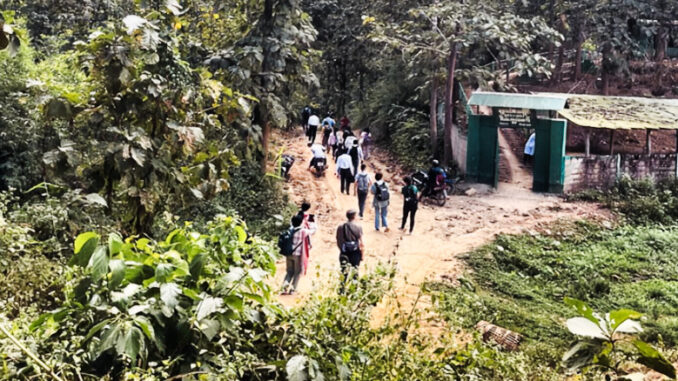
The Mae La “temporary shelter area” 1 is the largest of nine such sites located along the Thailand-Myanmar border. It is situated in Tha Song Yang District, approximately 60 kilometers from the cross-border trading hub of Mae Sot District and less than 10 kilometers from Myanmar. Mae La can be accessed via a paved road within one hour from Mae Sot on the Thai side (The Border Consortium, n.d.). Although I had read literature concerning its history and development and heard about the porosity of the shelter area in terms of human mobility, my first visit—to residences near the Bible School next to the shelter area—occurred during the 47th Southeast Asia Seminar in December 2023. The experience has deepened my ongoing research interests in borderlands and mobilities.
(Im)mobility of People on the Move
The population of the Mae La “temporary shelter area” has been increasing since the coup in Myanmar on February 1, 2021. One of the people who arrived during this time was Maung (alias), a 46-year-old man from the Karen State. He moved into the shelter area with his two children after his village was attacked and one of a series of bombardments killed his sister. Like many others, he saw the shelter area as a chance to find a new life and hoped for a better livelihood. An acquaintance in his village arranged transport to the shelter area by truck, and they crossed the border seamlessly. Life in Thailand started relatively free of struggle for Maung. He was given a cabin-like house and with the help of some shelter area residents, he repaired it to make it habitable again. His life in the shelter area was not as routine as one might imagine. He could find additional sources of income by sneaking out to harvest corn during the day. Sometimes at night, he would leave the shelter area to kill boredom. Maung’s experience illustrates the day-to-day mobility in and around the Mae La “temporary shelter area” and demonstrates the porosity of the Thailand-Myanmar borderlands, where those seeking passage to the shelter area in hopes of starting a new life are supported. At the same time, Maung remains unable to achieve broader mobility, as he cannot legally leave the camp or Thailand for further opportunities.
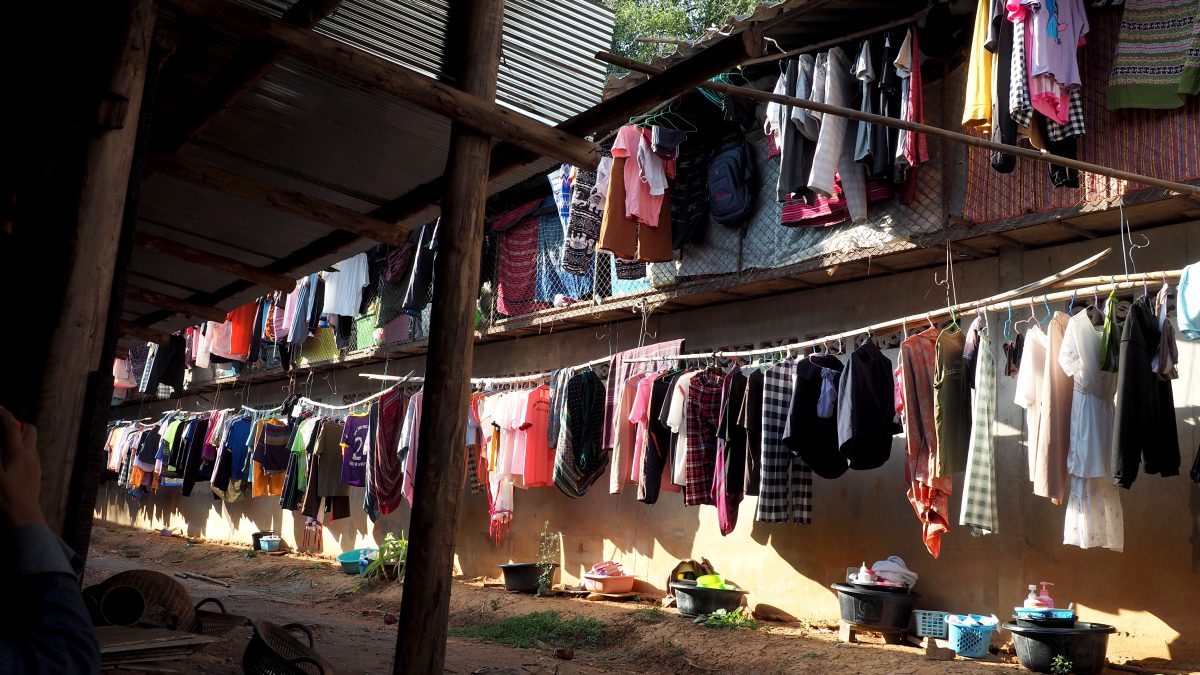
Muang’s brief trajectory is not an extraordinary story, but rather exemplifies those of others who see crossing into Thailand as highly possible. In 2016, Naw Paw, then a 16-year-old girl from Bago, decided to take matters into her own hands after realizing that her parents could not afford her basic education costs. She embarked upon a mission to further her education in the Mae La “temporary shelter area.” Following a visit from a female relative who had lived there, she made her way to the shelter area. In 2019, she enrolled in the Thoo Mweh Khee Migrant Learning Center in Phop Phra, a southern district of Mae Sot, which is approximately 120 kilometers from the shelter area. In July 2023, her two younger sisters followed her pathway to live in the shelter area. Of her seven siblings, she received her main financial support from her second brother, who lived in Hpa-an in Karen State. He was the main supporter of the family, especially for his younger sisters’ education. During the seven years that Naw Paw was in Thailand, she only traveled home once, in 2022, to visit her parents who were in their sixties. Struggling with a poor internet connection in remote areas of Karen State, her parents were forced to climb to higher ground to access a signal when they needed to communicate with their daughters. Although her two younger sisters also lived in Thailand and were only a two-hour drive from her school in the shelter area, Naw Paw had not seen them. This inability to see her family members demonstrates Naw Paw’s broader immobility.
The stories of Maung and Naw Paw reflect the movement of people under the “mobility turn” (Hannam et al., 2006; Sheller & Urry, 2006; Cresswell, 2010). Their narratives emphasize the politics of mobility suggested by Cresswell (2010), who argues that not everyone achieves mobility equally within the interrelated structural relationships of capital, globalization-impacted conditions, and social relations derived from complex and multifaceted production and distribution of power. We can observe that Maung utilized his network to settle down in the shelter area and seek additional income opportunities. Meanwhile, Naw Paw journeyed to the shelter area with a female relative visiting their shared hometown. Yet, they were restricted in other ways by state regulations and lack of capital.
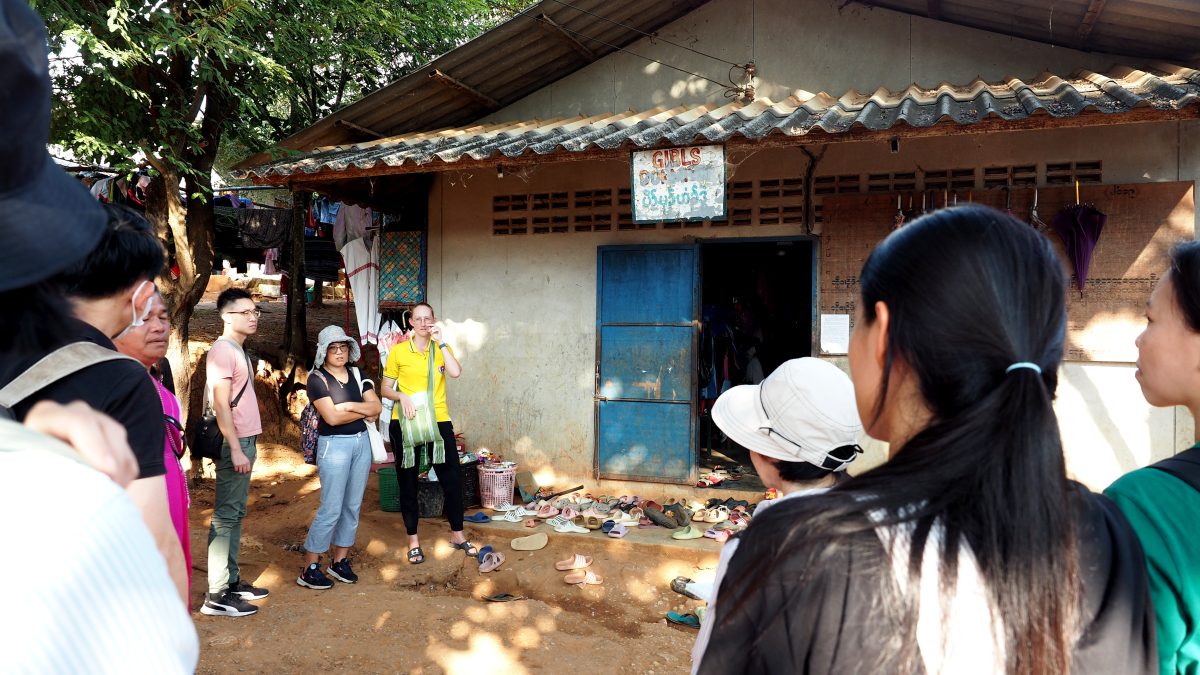
The phrase “people on the move” is used in this essay to confirm the complexity involved in crossing borders, the varying degree of “being noticed” by different state agencies (either of Thailand and/or Myanmar), and the range of organizations that impose their own policies and guidelines upon people who migrate. It is safe to assume that people on the move never thought of staying forever in the shelter area or initial points of arrival. They find opportune times to move on and navigate their trajectories through fortune and misfortune. Immobility occurs when they are unable to move, must pause their journeys, or fail to achieve any mobility at all (see Hannam et al., 2006). However, their contemplation of mobility or potential to move does not fade.
Mae La “Temporary Shelter Area” as Migration Infrastructure
In light of the mobility paradigm (Hannam et al., 2006; Sheller & Urry, 2006; Cresswell, 2010), I observed that the shelter area serves as a source of inspiration for individuals and influences mobility patterns. It can thus be conceptually categorized as migration infrastructure as introduced by Xiang and Lindquist (2014), who use “migration infrastructure” to refer to the complex space of social relationships among various actors, both human and non-human, that influence individuals’ access to mobility. The authors illustrate this concept through the migration of Indonesian laborers to Arab countries, highlighting the interrelated system of states, labor markets, and laborers’ social networks. Migration infrastructure can either facilitate or hinder people’s mobility or ability to move spatially and socially. Consequently, individuals may either benefit from or lose opportunities for migration (Lin et al., 2017). While I attempt to analyze the phenomenon of people on the move through the conceptual lens of migration infrastructure, this essay primarily draws upon the seven-day Seminar, which limits its analytical depth and data presentation. Consequently, I have chosen to narrow the focus to illustrate the lives of people within the context of the interrelationships among state entities, capital, and an individual’s networks.
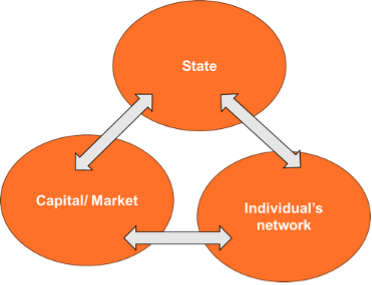
Aid and humanitarian support to shelter residents since the establishment of the Mae La “temporary shelter area” in 1984 to the present day include public health, education, and livelihood programs, along with specific projects and activities that aim to improve living conditions and overall well-being. The Mae La “temporary shelter area” demonstrates the complex relationships among various state dimensions. These include the Thai and Myanmar nation-states and associated entities as well as local Thai authorities and regulations. At the same time, the shelter and its operation are a result of negotiation between migrants and states (and officers of the state), in that the Thai state has allowed the “temporary shelter areas” to exist and deals with the complex situation of residents in the shelter areas and along the borders crossing back and forth between two countries (see Tangseefa et al., 2019, p. 4).
Specific characteristics of—or related to—the Mae La “temporary shelter area” contribute to the accumulation of capital among the people living there. This includes various livelihood programs and strategies created via different channels, which provide individuals’ opportunities for economic improvement. This is demonstrated by Maung’s story, he was able to improve his financial situation, particularly during the corn harvest season. Meanwhile, Naw Paw pursued further education at the migrant school and aspired to continue living in Thailand. Both lives exemplify the importance of the individuals’ networks as they negotiate with state regulations and seek opportunities for mobility and capital accumulation. Nonetheless, immobility occurs when they encounter challenges in negotiating state regulations or during unforeseen circumstances that restrict their ability to leave the shelter area.
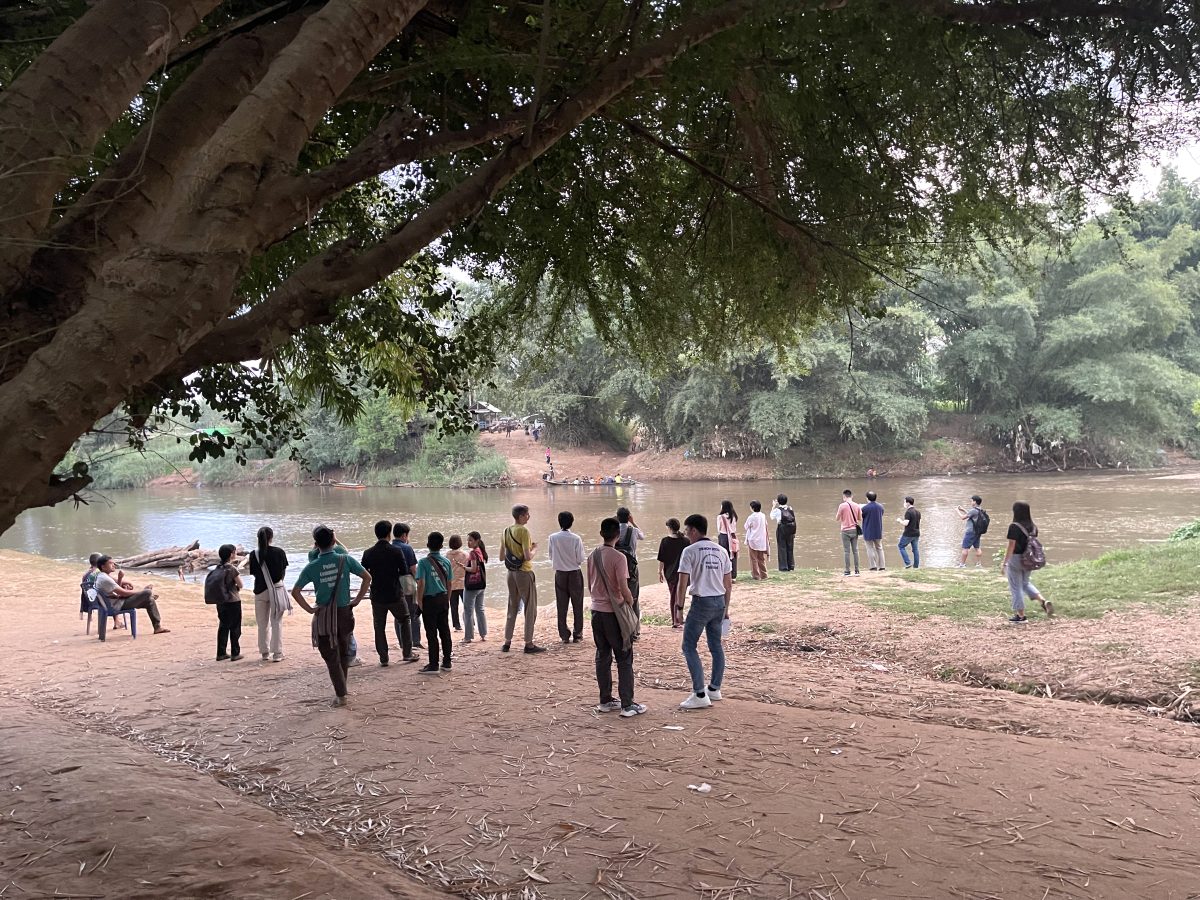
Human-Materiality Nexus
The migration infrastructure framework reiterates an examination of the non-human actors, or objects, that influence a migrant’s trajectory and experience. A material-oriented approach has been introduced to promote the study of the relationship between humans and objects in international migration, particularly to examine how materiality shapes “migrants’ worlds” in migration trajectories and outcomes. Wang (2016) suggests that the “material turn” encourages us to move beyond a subject-focused approach and dissolve the dichotomy of human-object coexistence by proposing a “things-in-motion” method. This methodology enables the formation of identities for people on the move who may be impacted by objects, while objects simultaneously play a significant role in identifying movement trajectories. The material turn therefore prompts us to pay equal attention to the relationship between subjects and objects. From this perspective, objects have driven people to move and have may have power over people’s decisions.
Several studies exploring the nexus between forced migration and materiality, such as Lauser et al. (2022, pp. 5-6), highlight that media and organizations often depict refugees as embarking on their journeys in a state of “bare life,” implying that they carry nothing with them in their pursuit of asylum or refuge. However, this portrayal contrasts with reality. Refugees typically adopt a “material speaking” approach, albeit to differing extents, as they navigate their precarious existence. At the very least, they possess clothes and belongings that assist their journeys. This resonates with the refugee/migrant crisis that emerged around 2015, notably exemplified by refugees and others from Syria and African countries attempting to enter European territories via land and sea boundaries. They prominently displayed their mobile phones, both for navigating their routes and accessing humanitarian aid provided by organizations like the UNHCR and for communicating their arduous journeys to public audiences (Gillespie et al., 2016; Leurs & Smets, 2018). This phenomenon mirrors the experiences of Mexican migrants crossing borders into the US, who rely on mobile phones to contact trusted individuals and access useful information shared on social media. However, near the US borders, these migrants often switch off their devices to avoid detection by American border patrol officers (Azhar et al., 2021).

From Maung’s story, we can observe some objects to understand the relationship between people on the move and the materiality involved. Maung’s settlement in the shelter area began with securing a place to live. He received assistance from fellow residents to repair a dwelling suitable for his family of three. Additionally, he was allocated 1,000-Baht food cards, which can be debited for essentials such as rice and cooking oil. The shelter area’s infrastructure, including its materials, could both facilitate and impede the freedom and mobility of people. Moreover, the timing of Maung’s arrival (in February 2021) rendered him ineligible for the resettlement program to third countries, which was reserved for verified shelter area residents who were eligible for the program before the coup in Myanmar. From the experience of the seminar and subsequent analysis, I am encouraged to reexamine how migration infrastructure, like the Mae La “temporary shelter area,” reflects the intersecting and interdependent relationships among states, capital, and the networks of people on the move, and to re-look at their life journeys from a human-materiality approach.
Busarin Lertchavalitsakul
Naresuan University
Banner photo: Walking toward: a) the Kawthoolei Karen Baptist Bible School & College; b) Htee Ger Nee Church, located next to the the Mae La “temporary shelter area”
Photo: Suphak Nosten
Notes:
- Acknowledging the Thai state’s official naming of this space, I employ the term “temporary shelter area” in this essay. Officially set up in 1984, the Thai state established a string of “temporary shelter areas” along the Thai-Myanmar border region and granted permission to humanitarian organizations to pursue their missions and support the shelter residents. Yet, to put this term in quotation marks is to problematize this usage: Four decades and counting cannot be considered as “temporary.” Moreover, a variety of people who have come to be involved with these shelter areas have referred to them as ‘camps’ (Tangseefa, 2007, p. 246; 2019). ↩
